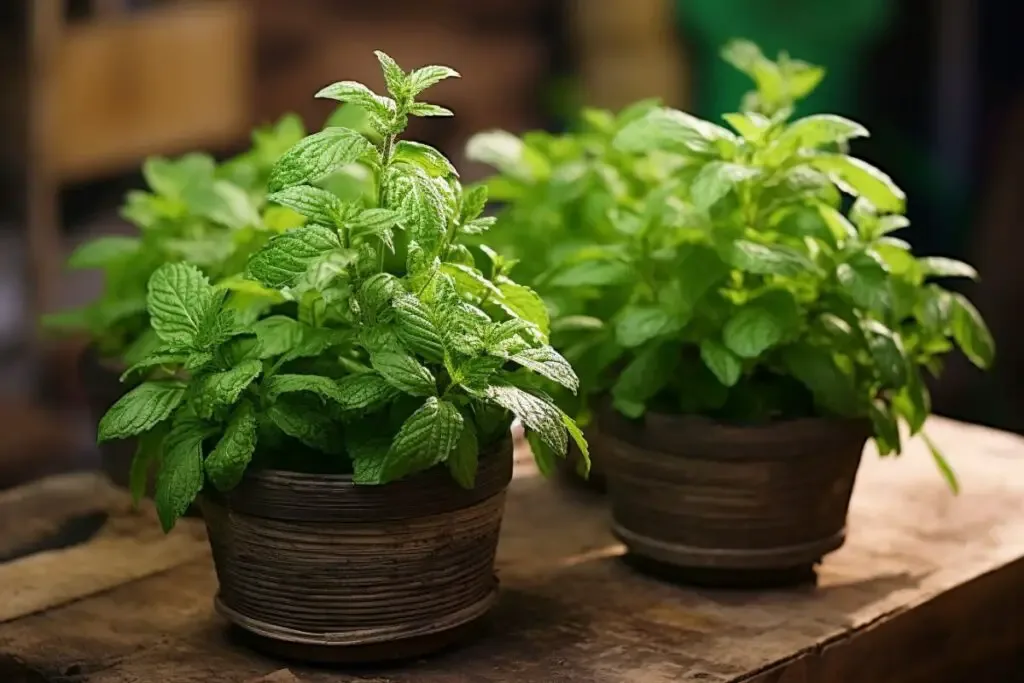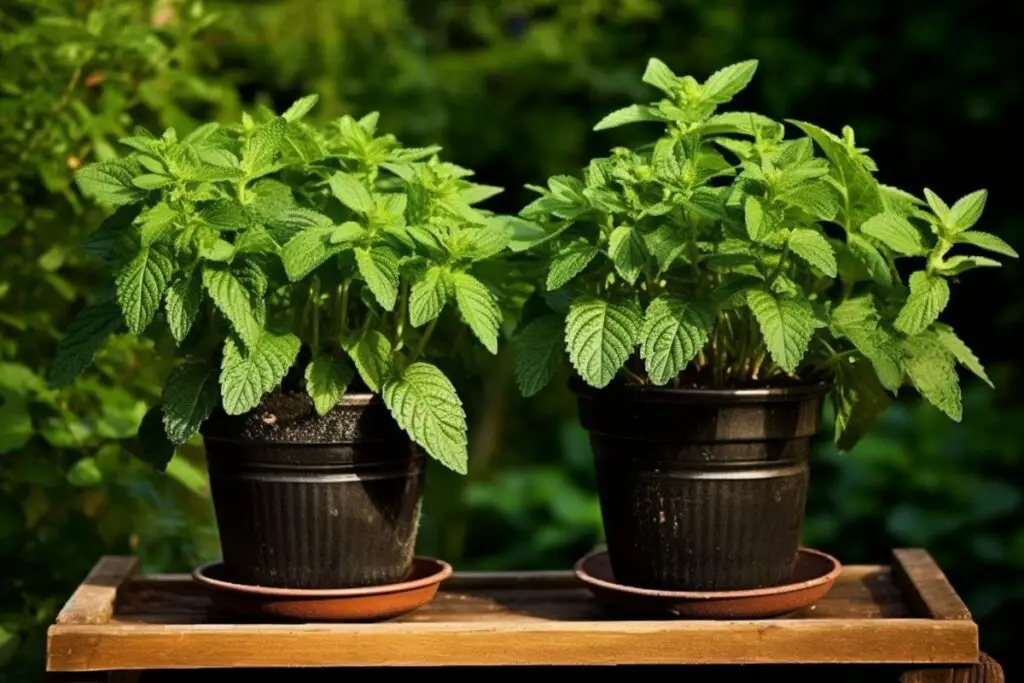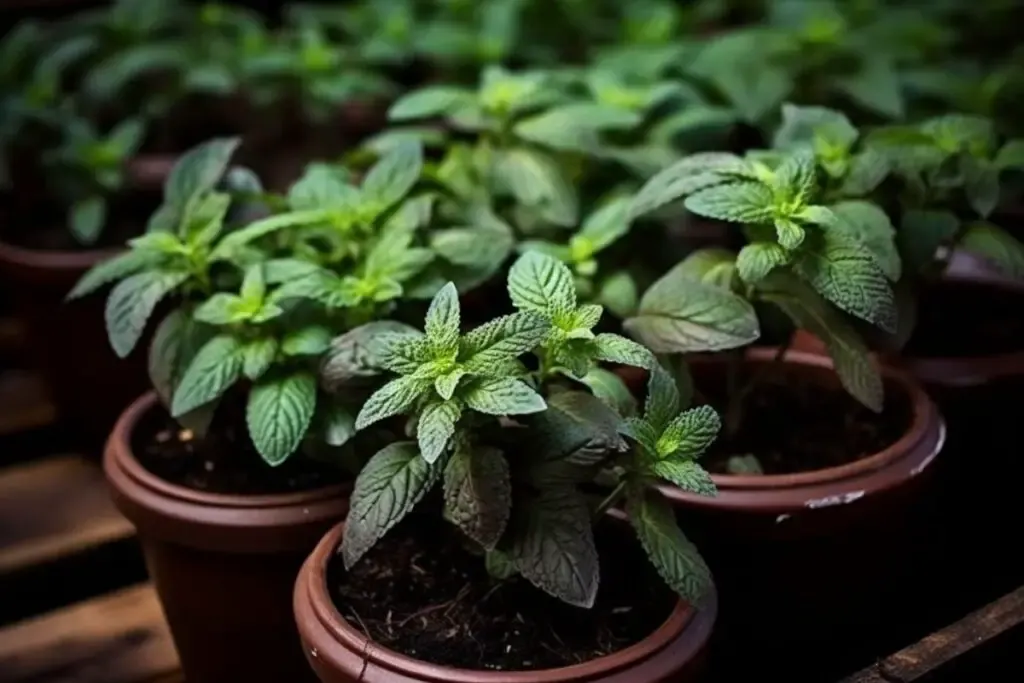Mint is one of those versatile herbs that can transform a dish, a drink, or even an entire garden with its refreshing scent and flavor.
But what if you don’t have a sprawling garden or are limited in space? The good news is mint thrives in containers, making it the perfect herb for balcony gardeners, windowsill gardeners, and everyone in between.
Growing mint in pots is not only space-efficient but also a smart way to keep this vigorous herb from taking over your garden.
Let’s dig into the world of mint in pots, and I’ll share with you all the tips and tricks to help you grow mint like an expert.
Does Mint Grow Well in Pots?
Absolutely! Mint is an ideal candidate for pot gardening. It’s a hardy plant that adapts well to the confines of a container. In fact, growing mint in pots can save you a lot of hassle because mint has a reputation for being quite invasive. In a pot, it’s contained and can’t spread beyond where you want it to.
The key to success with potted mint is understanding its needs: consistent moisture, regular harvesting, and enough sunlight. With the right conditions, mint will provide you with an abundant supply of fresh leaves for your teas, salads, and mojitos. Plus, there’s nothing like stepping out onto your patio and getting that burst of minty fragrance!
Best Mint Varieties for Pots
Mint comes in a surprising array of varieties, each with its own unique flavor and growth habit. Some are perfect for culinary use, while others might be more ornamental or have a particular scent.
I’ll highlight three of my personal favorites that have never failed to impress in my container garden.
1. Spearmint (Mentha spicata)

Spearmint, often just referred to as “mint,” is the classic variety that many of us are familiar with. It’s a vigorous grower, which makes it a great choice for beginners.
Its bright green leaves and signature sweet flavor are what you’ll want for your kitchen. I find spearmint to be less aggressive than some of its mint relatives, but don’t be fooled—it will still happily fill its container.
2. Peppermint (Mentha × piperita)

If you’re after that cool, intense minty kick, peppermint is the go-to. It has a higher menthol content compared to spearmint, giving it that characteristic bold flavor.
It’s fantastic for tea and medicinal uses. In my experience, peppermint can be a bit more finicky than spearmint when it comes to heat, so make sure it has a little shade during the hottest part of the day.
3. Chocolate Mint (Mentha × piperita ‘Chocolate’)

Chocolate mint is a fun, dessert-flavored variety that truly lives up to its name. It has a subtle chocolatey undertone, reminiscent of peppermint patties, making it a favorite for adding a twist to sweet dishes and drinks.
In terms of care, treat it as you would peppermint. It’s just as easy to grow, and in my opinion, it’s one of the most delightful varieties to have on hand.
How to Grow and Care For Mint in Pots
Growing mint in pots not only adds lush greenery to your space but also provides you with a fresh supply of this aromatic herb.
Here’s how you can ensure your potted mint plants are as healthy and bountiful as can be.
Planting
When planting mint in pots, I like to start with a good-sized plant from a nursery or use cuttings from an established mint plant.
Mint cuttings root so easily that you can just pop them in water and, within a week or two, you’ll have roots ready to plant. Just make sure each cutting has its own space in the pot for adequate airflow and sunlight exposure.
Pot Size
Mint isn’t picky about the size of its pot, but I recommend starting with at least a 10-12-inch pot for optimal growth. This size gives the mint enough space to spread its roots and grow lushly without quickly becoming root-bound. A deep pot also helps retain moisture, which mint loves.
Light
Mint does best with plenty of light. Aim for about 6-8 hours of sunlight per day. If you’re growing mint indoors, a sunny windowsill is perfect.
Outdoors, mint can tolerate some shade, but the more light it gets, the better it will taste. Just be mindful that in the peak of summer, intense afternoon sun can scorch the leaves, so a little afternoon shade can be beneficial.
Soil
The right soil is crucial for growing mint successfully in pots. This herb prefers well-draining, moist, and rich soil. I usually mix high-quality potting soil with some compost to give the mint a nutrient-rich environment.
Mint is not too picky about soil pH, but it thrives in slightly acidic to neutral soil. Remember, good drainage is key because while mint loves moisture, it doesn’t like to sit in waterlogged soil.
A potting mix that can hold moisture without becoming soggy will provide the perfect foundation for your mint plants to flourish.
Water
Consistent watering is important for potted mint. The soil should be kept evenly moist, but not soaking wet. I tend to water my mint when the top inch of the soil feels dry to the touch.
Mint plants are quite resilient and can recover from under-watering, but they will struggle in waterlogged soil. If you’re unsure, it’s better to err on the side of underwatering rather than overwatering. Good drainage holes in the pot will help prevent excess water accumulation.
Temperature and Humidity
Mint is a hardy herb that can tolerate a wide range of temperatures, but it thrives in moderate conditions. It prefers temperatures between 55°F and 70°F.
Mint can grow in humid conditions, but good air circulation is crucial to prevent fungal diseases. If you’re growing mint indoors, avoid placing it in overly dry areas, like near heating vents.
Outdoors, and mint can handle some fluctuation in temperature and humidity, but extreme heat can stress the plant, so providing some shade during the hottest part of the day is beneficial.
Fertilizer
Mint doesn’t require a lot of fertilizer, but a little boost can help promote lush growth. I recommend feeding your mint plant a balanced, water-soluble fertilizer diluted to half strength every 4 to 6 weeks during the growing season.
Be cautious not to over-fertilize, as this can lead to leggy growth and diminish the plant’s flavor. Organic options like compost or fish emulsion are great choices for mint, providing a gentle, slow-release source of nutrients.
Pruning Potted Mint
Pruning is an essential aspect of growing mint in pots, and it serves a dual purpose: it keeps your plants healthy and encourages a bushier, more vigorous growth. Regularly pinch off the tips of your mint, removing the top pair of leaves to stimulate the plant to branch out.
This technique increases the bushiness of your mint, preventing it from becoming leggy. Don’t be afraid to give your mint a good haircut. In fact, aggressive pruning is often beneficial. I cut back my mint plants by a third to half their height several times during the growing season.
Not only does this keep the plants manageable in their pots, but it also ensures that they produce plenty of fresh, tender leaves that are perfect for culinary use.
Remove any yellow or brown leaves as you see them to keep your mint looking its best. These could be signs of too much water or not enough light, so adjust your care routine accordingly.
Overwintering
As the growing season winds down, your thoughts might turn to overwintering your potted mint. Mint is perennial, and with a little care, it can survive the winter to regrow in the spring. If you live in a region with mild winters, your mint may be fine outside with some protection.
Move pots against the house or into a sheltered area to protect them from harsh winds. You can also mulch the top of the pot with straw or shredded leaves to provide extra insulation. In areas with freezing temperatures, it’s best to bring your mint pots indoors before the first frost.
Place the pots in a sunny window or under grow lights to maintain enough light exposure. Reduce watering in the winter months, but don’t let the soil dry out completely.
If you have a cool, bright spot like an unheated sunroom or enclosed porch, this can be ideal for overwintering mint. The cooler temperatures will mimic the mint’s natural dormancy period without the risk of frost damage.
By overwintering your mint properly, you’ll be greeted with robust new growth as spring arrives. It’s one of the joys of perennial herbs — with a little bit of care, they keep coming back, year after year.

